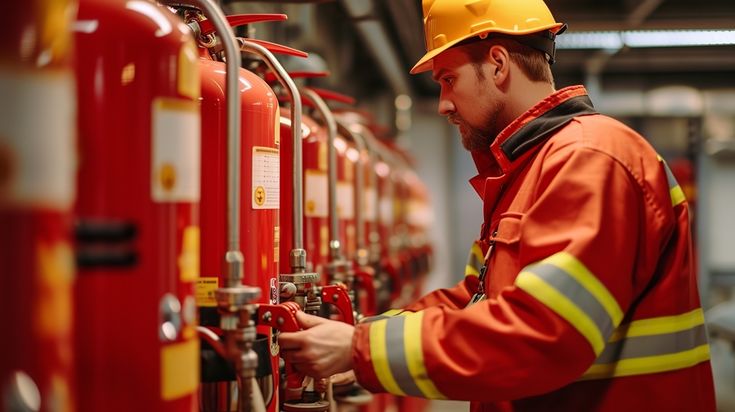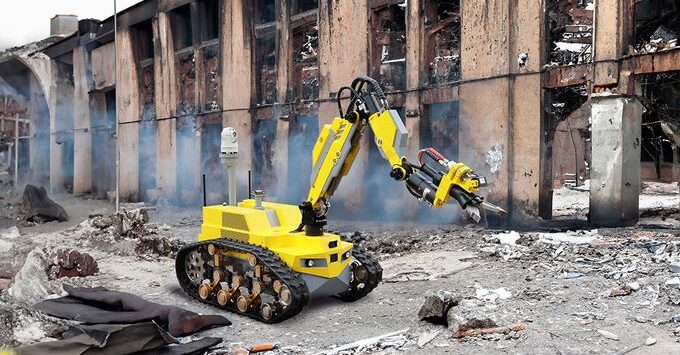Fire prevention is one of those issues that one wishes to avoid, but it is the last thing one can think of. Fire-related incidents impact thousands of lives every year, with terrible consequences on both the lives of people and on the community. To fight this constant threat, organizations should focus on the provision of effective training as a measure to be prepared and respond to it.
The conventional fire safety training method has its shortcomings. Lectures and boring demonstrations in classroom can reach so far in equipping people with information of what to do in a real life emergency. That is where immersive fire training systems are applicable. These systems can provide an interactive learning experience which can engage participants through the use of technology, and impart the essential skills by using interactive situations.
When we take a closer look at the transformative ability of immersive fire training we will look at how it has helped to improve on the understanding in the sense of realistic simulation, has offered a questionable way of teaching organizations a more affordable method, incorporating the newest technology and success stories of those who have adopted the new innovative form of educating on fire safety.
Real-Life Scenarios and Simulation Benefits
Fire training should be based on real-life situations. They offer the participants first hand experience in case of an emergency. In both scenarios, trainees are placed in stressful conditions and this simulates the disorder that may occur during a fire incident.
These simulated experiences assist in the development of muscle memory. The trainees are taught how to respond promptly in a decisive manner when exposed to flames or smoke. This practice proved to be priceless in the case of actual emergencies.
Teamwork and communication are also developed in simulations. Training in an environment that is controlled improves their capacity to marshal during real incidences.
Moreover, the emotional influence of the realistic training cannot be underrated. The trainees walk out empowered and more reassured of going to deal with crisis effectively. They are able to practice before an emergency strikes thus giving them the much needed knowledge on how to make decisions under pressure.
Such simulations produce long lasting impressions that result in the improvement of safety culture in organizations.
Cost-Effectiveness and Efficiency of Immersive Fire Training
The cost of investing in immersive fire training systems can save organizations a lot of costs. Textbook training usually consumes a lot of resources such as equipment, facilities, and human resources. This is made easier by the use of immersive technology.
In the case of virtual simulations, the companies do not incur the cost of physical setups. There is no danger or property harm to the trainees as they practice the realistic circumstances. This also saves money as well as increases safety.
In addition, simulations in fire training encourage effective learning. The participants become active users of the environment and thus the information retention is optimized. Research indicates that practical sessions produce more qualified responders.
Also, such systems enable repeated practice, which is free of extra expenses. Organizations can create trainings at their own pleasure and design them to meet certain needs.
The result? An excellent team that is ready to deal with the emergencies and maintain the budgets.
Incorporating Technology in Fire Safety Training
The introduction of technology in fire rescue training has transformed the way companies train their employees on emergencies. Virtual and augmented reality provide the simulation of an environment in which trainees are able to exercise important skills without putting any real-life risks.
This practical experience makes improvement of retention better, and prepares them to respond quickly in real cases. The simulation of different situations gives the employees a better insight into how fire works and how to exit the building, as well as how to use safety gears.
The essential information and resources are now available on-the-go through mobile apps. They offer real time instructions on process when time is of essence.
Additionally, data analytics software can be used to determine the performance of trainees, strengths, and weaknesses. This is a feedback loop to promote learning.
The use of the elements of the gamification as a part of training also enhances the level of engagement among the participants; they become more invested in safety measures and they enjoy the process. Technology is not an added feature, but it is needed to have an effective fire safety training.
Organizations Embracing Immersive Fire Training
Organizations that have adopted immersive fire training systems have success stories that are aplenty. Consider an example of a large factory in Ohio. They introduced virtual reality (VR) simulation to train their workers on possible fire incidents. They claimed that after only half a year, there was a great decrease in response time in the course of drills and a growth in employee confidence in situations associated with real-life.
The other example is in a California healthcare facility. Combining augmented reality (AR) in their training programs, staff members were taught to go about tricky emergency scenarios, as well as engage with realistic settings. It resulted in better communication among team members in real emergency situations, which demonstrated the strength of collaborative learning using technology.
The immersive training modules were an initiative undertaken by a nonprofit organization that was aimed at informing the local businesses of the fire safety protocols. The participants had to train on real world fire fighting methods and tactics and their level of perceptions and preparedness changed drastically in a few weeks.
These illustrations serve to point out the fact that organizations in different industries are enjoying the fruits of innovative training in fire safety. Immersive systems are not only beneficial but also necessary in the contemporary working environment that pursues the goals of increased safety levels through the combination of realism, engagement, and effective learning.
With the increase in the numbers of companies that realize such benefits, it is apparent that the investment in comprehensive fire training is not merely a beneficial measure, but a necessity to guarantee the safety in the workplace and save lives.












Leave a comment